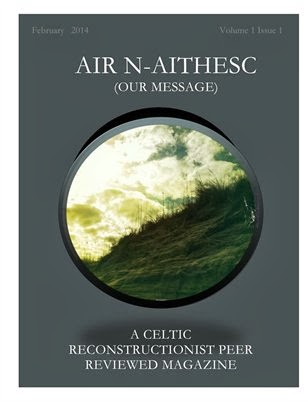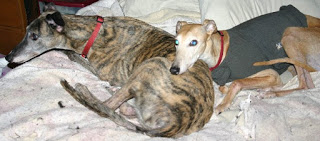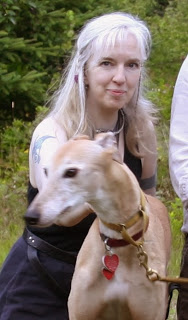 If you find this article helpful, please remember this was work to put together and I have animals to feed and vet
If you find this article helpful, please remember this was work to put together and I have animals to feed and vet
Recently Morpheus Ravenna, of Coru Cathubodua,* wrote that she is Not Rebuilding Her Cult in response to others who called for reviving ancient Deity cults and one mentioning that she was doing so for an Morrígan. I’m carrying on the blog cycle, for my first reaction to the title was “Well, I am!”
But that’s not really accurate, either. I have no desire to build a cult and lead it, if that’s what that sounds like. It’s more I feel She or They are trying to rebuild it, that They are seeking people out to follow Them in a manner that is related to the old cult I believed existed. I wouldn’t mind helping to incite Her cult back into existence, however,and to offer evidence of it and ways it might happen today. Although, of course, I may not always like what others do with the information I share, I have learned it’s better to live with that than be control freak (although I might have rants on it, of course). And I’m finding certain pressures to reveal my work despite any concerns that I might have.
The difference in my thinking might be explained in her second paragraph and my own take on the issues she brings up there. One being a different take on what the fact that there was no continuation and no documentation from practitioners of what such a cult was like means for rebuilding. We don’t even know if there ever was a cult to the War Goddesses. But that’s an overall problem with Pagan Gaelic traditions, we have to work with what we got, which is a combination of archaeology, Christian literature and law and some Classical observations (which were fewer for Gaelic cultures), as well as some cross-Indo-European speculations. Which is, of course, where Reconstructionist methodology comes in, we wouldn’t need to reconstruct if this problem wasn’t substantial.
Coming from this methodology also leads to a different take on what such a rebuilt, or reconstructed, cult might look like, today. Despite some “definitions” I’ve seen given that often makes it sound like we intend to practice exactly as our ancestors did (something which is impossible if we can never actually know and need to reconstruct to begin with, as well as living under different laws), “Reconstruction” means that we are using research of the past to reconstruct what such things might look like today, in a culturally related fashion. Neither recreating out of cultural context nor trying to live in a past that is gone. This means that even when we have evidence, not all things will be revived. Just as modern Druids, even Reconstructionist ones, manage to practice without human sacrifice,except symbolically, I believe we can reconstruct the war band cults without actually taking heads. At least until the Revenant Cataclysm finally comes.
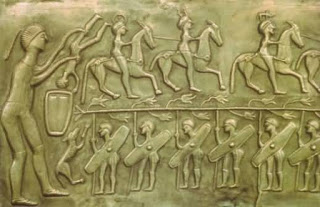 |
| Panel from Gundestrup cauldron
likely showing a warrior initiation |
I do believe that such a cult or cults very likely existed, and I am focused on the war bands as evidence of them. I follow Epstein’s speculation that Cú Chulainn** is a representation of what the Christian scribes interpreted it might have been like.(Epstein, Ch 3). Following her thoughts that there would be similarities to the berserkr (“bear coats”) and ulfheðnar (“wolf coats”) practices of the likely very cultic Germanic warbands, I also extrapolate that we find hints in the stories of the Fíanna, despite actual Goddess connection lacking (although perhaps some hints to it with the female teachers, one named Bodbmall who Epstein notes may connect to the name Badb and she and Nagy have related to Buannan (Nagy, Wisdom of the Outlaw, pg. 102, Epstein, Ch. 2). From there, of course, to the díberga and their relationship to fáelad (wolfing). I find them interesting in their “unsavory” Paganism and withhold bias against them for the general brigand traits the clerics also attributed to them.(see Sharpe for díberga/Fíanna and McCone and West for that and the wolf speculations) I have also been doing a good bit of writing in regards to the canine aspects and how Cú Chulainn actually fits as more of an Outlaw than a tribal warrior, but these are not yet published. (I will, of course, be letting you know in this blog when they are available somewhere)
Although I want to point out that I’m not trying to create conflict between Ravenna’s vision and my own, only to note how we might be viewing particular’s differently as well as may have different focuses on thie history. Regarding the points Morpheus makes in her post. With location I am, as long time readers have likely figured out, focused on the War Goddesses in Gaelic culture only. I do however look for relevant similarities found not only in the other Celtic cultures, but, also Germanic ones as there do seem to be many correlations between the war band cults of these cultures, although the Germanic are often to male Deities. I do agree that the title an Morrígan may well have been held by many regional Goddesses, although I follow Stokes, Epstein and others regarding the title “Morrígan” as more common and older than “Mórrígan” and therefore means “Phantom Queen” rather than “Great (or Big) Queen” which is a later folk etymology (Stokes, pg. 128, Epstein Ch. 1 “etymologies,” I also go into this a good bit in some upcoming work) and may not bear relation to the “Great Queens” of Brythonic cultures which. Therefore my focus is with working within a Gaelic framework, although I would hope to network with those who might revive war band cults from other cultures. It does, however, lead to a certain flexibility and understanding that more than one actual cult is likely, should any start up again or not.
As for seasons, there is a preponderance of focus on Samain† in the tales an Morrígan is strongly featured in. However, this does seem to have been a time relating to Otherworldly and special events. While wars in the tales often start at this time, we also have later Fenian tales that note that warfare ceased from Samain to Beltene,. Other accounts, and archaeology, does seem to point that warfare and raiding did seem to quiet, if not cease, at Samain, but raiding started up around Imbolc.(Patterson pg. 123, 132-133) Given the link with the warbands and wolves, as well as this return to raiding, I also link Imbolc, or the period between Imbolc and Beltene, with specific work on Awakening the Wolf. Lugnasad, a time of festivals involving horse racing, has been linked specifically to the sister War Goddess Macha. Therefore there is no specific season for me in regard, there may just be difference in focus, devotions of a modern cult might turn inwards more during the winter months, and outward during the summer, in keeping with the tales or might alter depending on seasonal changes in location. Modernizing this doesn’t seem to be a large issue for me.
Incidental or temporal worship already seems carried over by many us anyway, again, within the bounds of legality. Taking omens, making offerings (even if subtly) for specific reasons in specific places is not a large issue. It would, undoubtedly, be an issue for those professional warriors upon battlefields, but this is where we adapt to the situations we are in. And, after all, incidental worship is about adapting.
It is devotional practice is what gets to the meat of it. That which was done, that which we can do now based on the evidence. It might also be where difference in seeing a rebuilding or a new tradition might come in. I already noted, that if in general CRs have had to forgo human sacrifice or adopt symbolic practices (many of which are later folk practices such as the Bealtuinn “sacrifice”) I think we can manage to refrain from piling actual heads. A few modern Gaels I know are quite into the symbolism all the same. Of course, “war spoils” and other related votive offerings can be easily retranslated to modern context of what we find symbolic.
But as I noted, I relate the cult to the Outlaw war bands, what may well have been a Pagan subculture of the early Christian culture. (see McCone, Sharpe, West) Therefore my focus is on the practices which we can interpret about these bands, even in the face of the rather negative reputations the díberga might have, especially in some saint tales. Devotion to me may not be that far off from the non-battle things these warriors offered. Their bodies, their effort into training and preparing. Whether one becomes a full, literally blooded, warrior or not, the training part is there for all of us who do walk the warrior path.
But, again, as I noted above, I also see this as ecstatic practice “shape-shifting” …for me it’s canine, for others I’ve talked to there may be corvid. This may be about out-of-body travel or about an embodied fugue state, strengthening the trained body. (I will eventually have an announcement on something on this). While I am often focused, especially in this blog, on the practical, I feel it’s important to have the ecstatic aspect as well, at least for those so inclined. (No one said every member of a cult would necessarily do the exact same things)
So for me rebuilding Her/Their Cult/s is about the devotional practices, often very embodied ones. And in a modern context. These things would vary by whether one is a professional soldier or a, well, amateur walking the warrior path, of course, as well as on ability and talents. But it would involved fitness, practical martial arts training (which may not always be traditionally Gaelic and could include firearms training), culturally traditional Gaelic martial arts training (which may not always be practical), ecstatic shape-shifting, Seership, poetry and other arts. Not all in the cult might be warriors, we have in the Fenian material druids who helped train Finn in the Sight, after all. But it would be the key focus. I also see an importance on preparedness for a variety of situations, as well….after all, many of us amateur path walkers seem to be preppers. For some of us, hunting, foraging and deep wilderness exploration might connect us to the Outlaw role as well. Again, we must adapt for hunting seasons are almost the opposite now as they were in early Irish law. (Patterson)
There is, of course, what a cult provides, both members and community, as I believe that service is a key role. The war bands may not have been in the society, but they did serve it. This is not necessarily focused on our “religious” or cultural communities, but should probably include or physical neighbors of all cultural and religious backgrounds. The professional, soldier, LEO or related, serves a broad community in obvious ways. Others might volunteer for CERT (Community Emergency Response Team), help organize the local community to deal with disaster and long-term preparedness, teach martial arts and/or self-defense, become victims’ advocates, do volunteer escort in dangerous areas (working with a proper community organization and within their guidelines). And, of course, providing appropriate rituals for those who do worship our Gods when they have need of the War Goddesses.
Needs for members would vary for the professional warrior who has seen combat and is returning to her family, but also for the rape survivor who is moving from victim to hero in her own story. Rituals can be developed for such transitions based on literary references. Makings sure cult members are served by the cult, creating a support system for each other, is a part of the reason to have such a cult, after all. Because it is true, this is not an easy worship, not even for those of us just on the path who might never be blooded as full warriors. For those who are blooded, it is often traumatic so support within a cult would be vital. Ritual, counseling, intervention, just having the right people to connect with and help each other connect to the Goddess we serve. ETA: Perhaps even a good hurling team can be a part of that healing. How long a cult member might be in the cult may vary individually and by need as well. A soldier may find her/himself drawn to service of a War Goddess, but wish cleansing and to move away from the cult when returning to civilian life while others may be, as Nagy put it, “chronic Outlaws.”
I feel that cults based on what we know of the culture, kept in cultural perspective but adapted for the laws we live under, is fully possible using Reconstructionist methodology. I also believe it’s something They want and I hope to see more cultic development in my lifetime. In fact, I’m smelling things on the wind which I think might become very interesting.
*ETA: I now need to note that I in no way associated with this group. I had only ever read the blog and for awhile some members where in my FB War Goddess group. As I am a devotee to Macha who has vowed to fight for Her horses and to end horse slaughter, I no longer have even that amount of contact due to the group eating horse meat in a misguided and loathsome attempt to somehow honor Her. Doing this is as close to sacrilege as I could even imagine. Therefore do not read this mention of the post, done before I knew about this, to be any sort of recommendation. Please see another blog I write for Heathens and Pagans for the Horses
**This relationship seems problematic as most see conflict and rejection between Cú Chulainn and the Morrígan. However, looked at from from the warrior path apparent antagonism begins to make sense that She challenges and goads him, he comes back with the arrogance She expects and he rejects the easy victory as he is also expected to do. No one said serving a War Goddess was simple, straightforward or painless.
†I am using the older spellings here, rather than the Scottish Gaelic ones which are my preference as this is relating literature and history.
Angelique Gulermovich Epstein, “War Goddess: the Morrígan and her Germano-Celtic Counterparts” dissertation for UCLA, 1998
Kim McCone, “Varia II” Ériu 36, 1985
Kim McCone “Werewolves, Cyclopes, Díberga and Fíanna: Juvenile Delinquency in Early Ireland” Cambridge Medieval Celtic Studies, issue 12, 1986
Joseph Falaky Nagy. The Wisdom of the Outlaw: The Boyhood Deeds of Finn in Gaelic Narrative Tradition, Berkeley: University of California Press, 1985
Nerys Patterson. Cattle Lords & Clansmen: The Social Structure of Early Ireland, Notre Dame, IN: University of Notre Dame, 1994
Richard Sharpe, “Laicus, Irish Láech and the Devil’s Men,” Ériu 30, 1979
Whitley Stokes, trans. “The Second Battle of Moytura” Revue Celtique 12
Máire West, “Aspects of díberg in the tale TogailBruidne Da Derga,”Zeitschrift für celtische Philologie (ZcP) , Volume 49-50, 1997
copyright © 2013 Saigh Kym Lambert
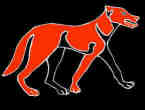 This is from my article in Air n-Aithesc Vol III, Issue 1 currently available in hard-copy or e-copy from this link. Unlike previous excerpts, this in not the beginning of it, as I began with a dream sequence that would be too long for a lead in and I don’t want to post only part of. The article is a continuation of my exploration of the fénnidecht wolf-warrior path, specifically how I follow it as a devotion to the Morrígan and some material on female werewolves, weredogs and dog-heads.
This is from my article in Air n-Aithesc Vol III, Issue 1 currently available in hard-copy or e-copy from this link. Unlike previous excerpts, this in not the beginning of it, as I began with a dream sequence that would be too long for a lead in and I don’t want to post only part of. The article is a continuation of my exploration of the fénnidecht wolf-warrior path, specifically how I follow it as a devotion to the Morrígan and some material on female werewolves, weredogs and dog-heads.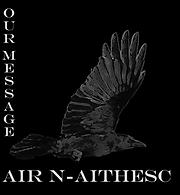
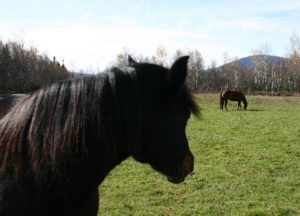

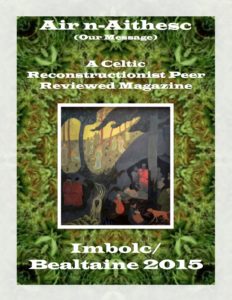
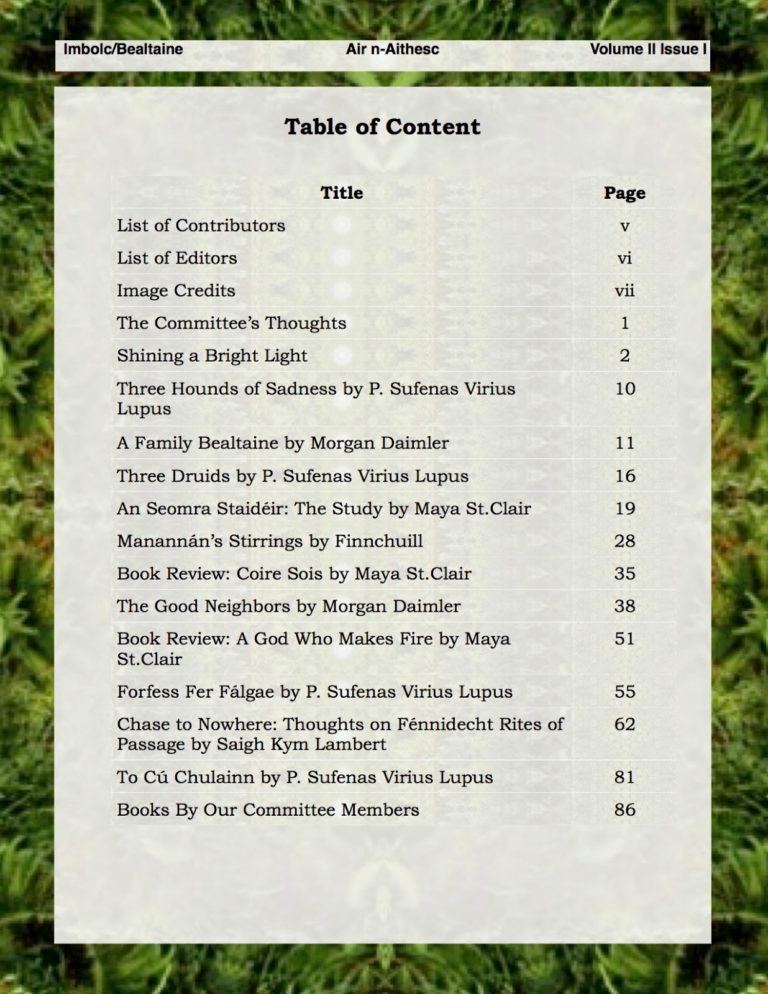
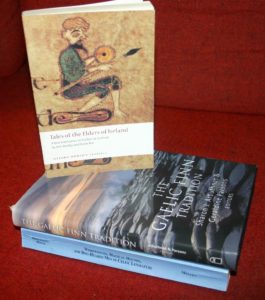 So taking Maya St.Clair’s, who blogs as
So taking Maya St.Clair’s, who blogs as 